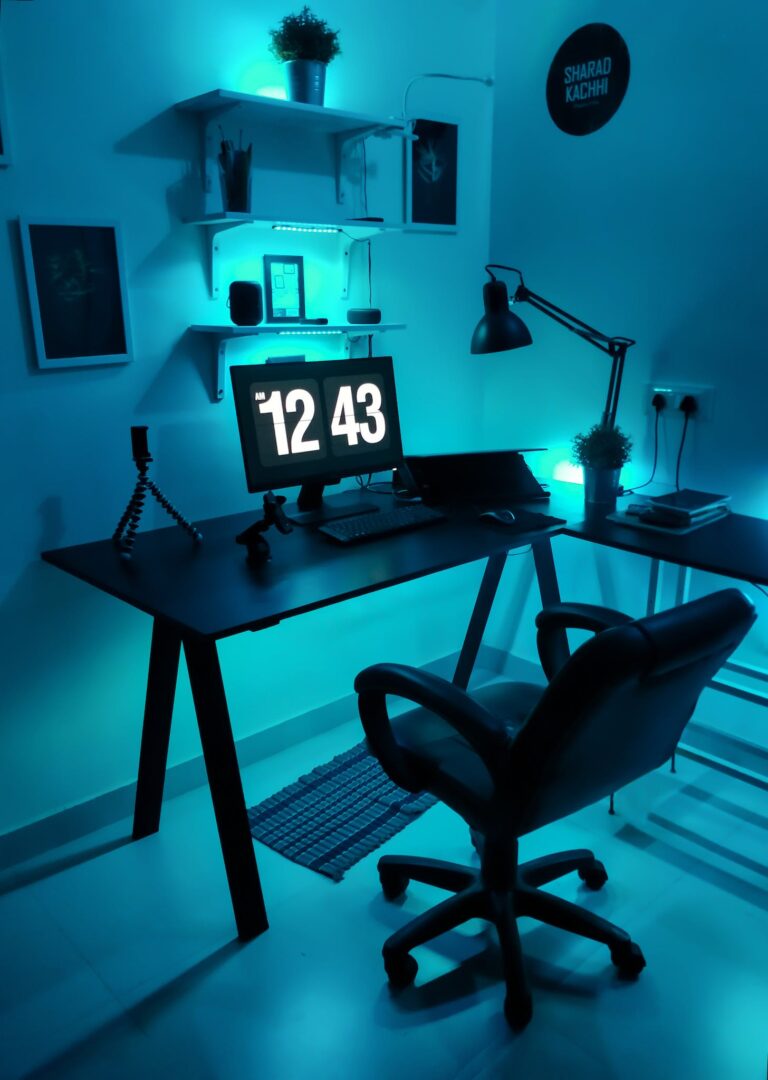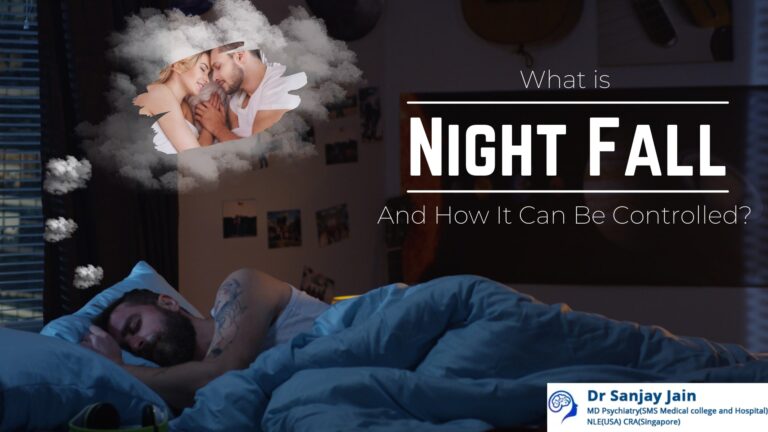How to Use Acupressure Points for Sleep and Stress Relief
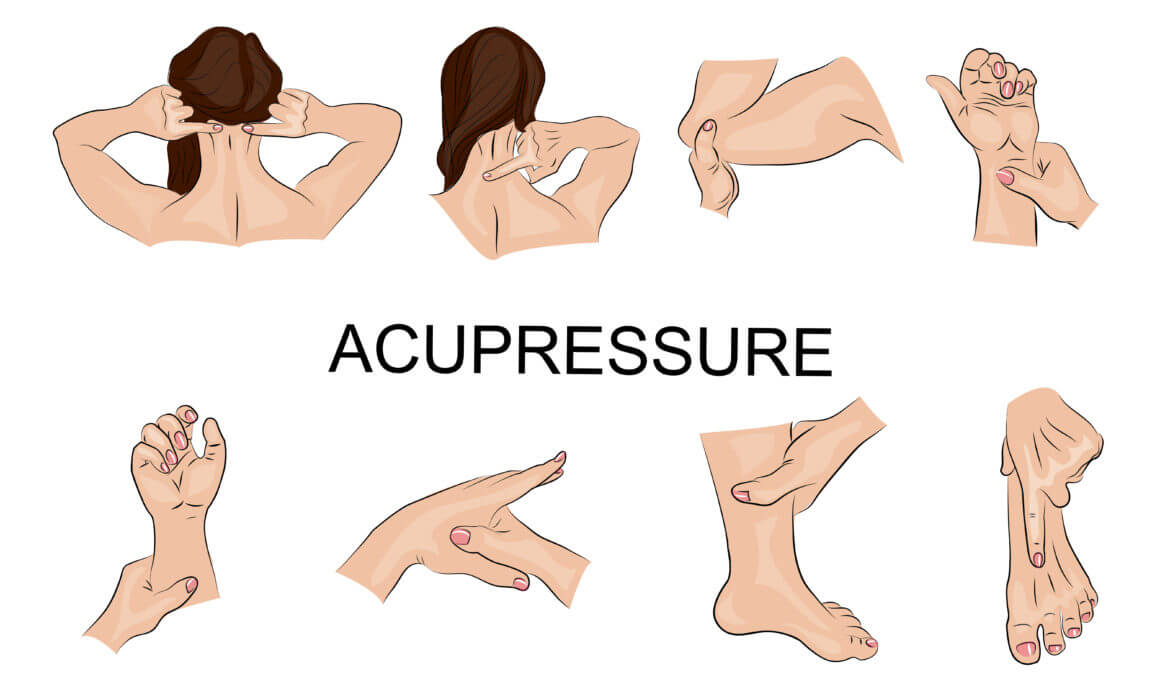
2. Exploring the Benefits of Acupressure for Sleep and Stress Relief

Acupressure has long been recognized for its effectiveness in promoting relaxation and relieving stress. However, it is also gaining recognition for its potential in improving sleep patterns and addressing sleep disorders. The benefits of acupressure for sleep and stress relief are rooted in the principles of Traditional Chinese Medicine (TCM), which views the body as an interconnected system of energy pathways known as meridians.
One of the key advantages of acupressure is its ability to stimulate specific acupoints along these meridians to promote the flow of energy and restore balance in the body. By applying pressure to these points, acupressure aims to release tension, improve circulation, and alleviate symptoms associated with sleep disturbances and stress. Furthermore, acupressure is a non-invasive technique that can be easily incorporated into daily routines, making it a convenient option for those seeking natural alternatives for better sleep and stress management.
Research has shown promising results in the application of acupressure for sleep and stress relief. A clinical study published in the Journal of Alternative and Complementary Medicine found that acupressure significantly improved sleep quality and reduced insomnia symptoms in participants. Another study published in the Journal of Clinical Nursing reported that acupressure had a positive impact on reducing stress and anxiety levels among individuals. These findings support the potential of acupressure as a safe and effective approach to addressing sleep and stress-related issues.
3. Identifying the Key Acupressure Points for Sleep and Stress Relief
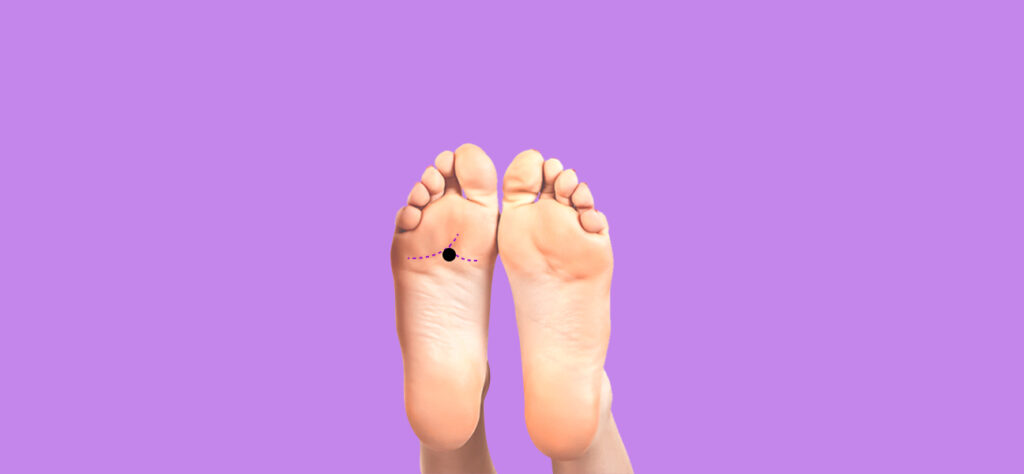
One of the key acupressure points for sleep and stress relief is the Pericardium 6 point, also known as the Neiguan point. Located on the inner side of the forearm, about three finger widths above the wrist crease, this point is believed to alleviate insomnia and anxiety. Applying gentle pressure or massaging this point for a few minutes can help induce a sense of calmness and relaxation, promoting a deeper and more restorative sleep. Research has shown that stimulating the Pericardium 6 point can also reduce feelings of stress and restlessness, making it a valuable acupressure point for overall stress relief.
Another important acupressure point for sleep and stress relief is the Anmian point. Situated just behind the ear, in the hollow between the ear and the mastoid bone, this point plays a significant role in promoting calmness and deep sleep. It is believed that massaging or applying pressure to the Anmian point can activate the release of endorphins, which are natural painkillers and mood enhancers. This, in turn, can help reduce agitation, anxiety, and nervousness, allowing for a more peaceful and restful sleep. The Anmian point can be stimulated by gently pressing or massaging it in a circular motion for a few minutes before bedtime.
4. The Pericardium 6 Point: Alleviating Insomnia and Anxiety
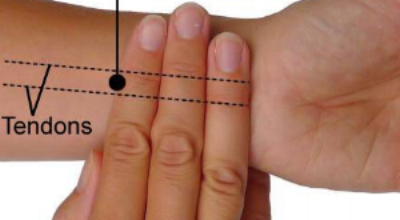
The Pericardium 6 point, also known as the Neiguan point, is a key acupressure point that has been used for centuries to alleviate insomnia and anxiety. Located on the inner forearm, about two finger-widths above the wrist crease, this point is highly effective in promoting relaxation and reducing stress-related symptoms.
By applying firm pressure on the Neiguan point, you can stimulate the release of endorphins, which are natural pain-relieving and mood-enhancing chemicals in the body. This can help alleviate insomnia by promoting a sense of calmness and mental relaxation, making it easier to fall asleep and stay asleep throughout the night. Additionally, the Pericardium 6 point can also reduce anxiety by calming the mind and soothing restlessness.
Studies have shown that acupressure on the Pericardium 6 point can significantly improve sleep quality and reduce the severity of insomnia symptoms. Furthermore, it has been found to be effective in managing symptoms of anxiety disorders such as generalized anxiety disorder, panic disorder, and post-traumatic stress disorder (PTSD). By incorporating acupressure on the Neiguan point into your daily routine, you can benefit from its sleep-inducing and anxiety-relieving effects. Next, we will explore another important acupressure point for sleep and stress relief – the Anmian point.
5. The Anmian Point: Promoting Calmness and Deep Sleep

The Anmian point, also known as the Peaceful Sleep point, is an acupressure point that plays a significant role in promoting calmness and deep sleep. Located bilaterally at the back of the head, just above the ear, this point is considered highly effective in alleviating insomnia and restlessness. By stimulating the Anmian point, individuals can experience improved sleep quality and reduced nervousness.
When pressure is applied to the Anmian point, it helps to calm the nervous system, allowing the body to relax and enter a state of deep sleep more easily. This stimulation also aids in reducing mental tension and anxiety, allowing individuals to experience a greater sense of tranquility. By regularly stimulating the Anmian point, individuals can establish a healthy sleep routine and ultimately enjoy a more restful and rejuvenating sleep experience.
It is important to note that acupressure is a safe and non-invasive technique that can be practiced by individuals of all ages. However, it is advisable to seek guidance from a qualified acupressure practitioner or a healthcare professional who can provide personalized advice and ensure correct technique and pressure application. By incorporating the Anmian point stimulation into your sleep routine, you can enhance your sleep quality and experience a greater sense of calmness and relaxation in your daily life.
6. The Shenmen Point: Reducing Stress and Restlessness
The Shenmen point, also known as HT7 or Heart 7, is a powerful acupressure point believed to reduce stress and restlessness. It is located on the inner wrist, in the depression between the ulnar artery and the tendon of the flexor carpi ulnaris muscle. Stimulating this point is said to promote mental clarity, calmness, and emotional stability.
According to traditional Chinese medicine, the Shenmen point is associated with the Heart meridian, which plays a vital role in regulating emotions and mental well-being. When this point is stimulated, it is believed to help balance the Heart meridian, thus alleviating anxiety, insomnia, and other stress-related symptoms.
Acupressure on the Shenmen point can be performed using gentle pressure with the thumb or index finger. Applying steady pressure for a few minutes, while breathing deeply and focusing on relaxation, may help activate the soothing effects of this point. It is important to note that during the acupressure session, if any discomfort or pain is experienced, the pressure should be reduced or stopped.
Research on the Shenmen point’s effectiveness in reducing stress and restlessness is limited. However, some studies suggest that acupressure on this point may have a positive impact on symptoms of anxiety and sleep disorders. It is always recommended to consult with a qualified acupuncturist or healthcare professional before trying acupressure or any alternative therapies for stress relief.
7. The Heart 7 Point: Soothing the Mind and Easing Sleep Disorders
The Heart 7 point, also known as Shenmen or Spirit Gate, is a significant acupressure point located on the wrist. This point is believed to have a calming effect on the mind, making it an excellent choice for those struggling with sleep disorders and stress. Applying pressure to the Heart 7 point may help to soothe anxiety, reduce tension, and promote a sense of tranquility, ultimately aiding in improving sleep quality.
To locate the Heart 7 point, flex your wrist slightly and place your index finger on the wrist crease just below the little finger. Apply gentle pressure and hold for a few seconds, focusing on deep breathing. It is essential to note that for optimal results, you should consult a trained acupressure practitioner or a healthcare professional to ensure proper positioning and application of pressure on this acupressure point. Integrating the stimulation of the Heart 7 point into your daily routine may provide a natural, non-invasive way to ease sleep disorders and promote mental well-being.
8. The Spleen 6 Point: Balancing Energy and Inducing Relaxation
The Spleen 6 point, also known as Sanyinjiao, is an acupressure point located on the inner side of the lower leg, about four finger widths from the ankle bone. This point is considered a key point for balancing energy and inducing relaxation in traditional Chinese medicine. Stimulating the Spleen 6 point is believed to have a harmonizing effect on the body’s energy flow, known as Qi, and can help to relieve symptoms such as insomnia, anxiety, and fatigue.
According to traditional Chinese medicine, the Spleen 6 point is associated with the Spleen meridian, which is responsible for the transformation and distribution of energy in the body. When this meridian is imbalanced or blocked, it can lead to symptoms such as poor digestion, weak immune function, and feelings of heaviness or sluggishness. By applying gentle pressure or massage to the Spleen 6 point, it is believed that the Qi flow in the meridian can be restored, helping to balance the body’s energy and promote a state of calm and relaxation.
9. The Governing Vessel 20 Point: Relieving Insomnia and Mental Tension
The Governing Vessel 20 point, also known as the Baihui point, is an acupressure point situated at the crown of the head. This point has been used for centuries in traditional Chinese medicine to alleviate insomnia and mental tension. According to traditional Chinese medicine principles, the Governing Vessel 20 point is believed to regulate the flow of energy, or qi, throughout the body, promoting balance and harmony.
Applying gentle pressure to the Governing Vessel 20 point may help stimulate relaxation and reduce anxiety, leading to improved sleep quality. Clinical studies have shown that acupressure on this point can help regulate the hypothalamic-pituitary-adrenal (HPA) axis, which plays a crucial role in the body’s stress response. By balancing the HPA axis, the Governing Vessel 20 point may help calm the mind and ease mental tension, allowing for a more restful sleep.
When stimulating the Governing Vessel 20 point, it is important to use steady, firm pressure using the fingertips or a soft acupressure tool. Apply the pressure for about 1-2 minutes, taking slow, deep breaths to enhance relaxation. It is advisable to repeat this acupressure technique daily for optimal results. However, it is important to note that acupressure should not replace professional medical advice, and individuals with specific health concerns should consult with a healthcare provider before attempting any acupressure techniques.
10. The Conception Vessel 17 Point: Enhancing Sleep Quality and Reducing Nervousness
The Conception Vessel 17 point, also known as the Shanzhong point, is a remarkable acupressure point located on the center of the sternum, in the hollow between the breasts. This point is believed to play a significant role in enhancing sleep quality and reducing feelings of nervousness. Stimulating the Conception Vessel 17 point is thought to promote a sense of calmness and relaxation, making it an invaluable tool for managing stress-related sleep disorders.
According to traditional Chinese medicine, when this acupressure point is stimulated, it helps to regulate the flow of energy (Qi) in the body, restore balance, and harmonize the mind and body. Research suggests that applying pressure on the Conception Vessel 17 point may help alleviate symptoms of anxiety, nervousness, and insomnia. By targeting this point, individuals may experience a calming effect on their nervous system, leading to improved sleep quality and a reduction in overall feelings of restlessness. However, it is important to consult with a trained acupressure practitioner or healthcare provider to ensure proper technique and application for optimal results.
11. How to Locate and Stimulate Acupressure Points Safely and Effectively
To effectively locate and stimulate acupressure points for sleep and stress relief, it is important to follow some key guidelines to ensure safety and maximize the benefits. Firstly, familiarize yourself with the specific acupressure points associated with sleep and stress relief, such as the Pericardium 6 Point, the Anmian Point, the Shenmen Point, the Heart 7 Point, the Spleen 6 Point, the Governing Vessel 20 Point, and the Conception Vessel 17 Point. These points are known for their ability to alleviate insomnia, anxiety, restlessness, and other sleep-related disorders.
To locate these points, you can use various methods. One simple technique is to observe anatomical landmarks. For example, the Pericardium 6 Point can be found by measuring three finger widths down from the wrist crease on the inner forearm. Another method involves palpating for sensitive areas. Press gently on the identified spot and pay attention to any feelings of tenderness or discomfort, as these may indicate the presence of an acupressure point. It can be helpful to have a diagram or acupressure chart on hand for reference during your practice. Once you have located the desired point, use your thumb or fingers to apply steady pressure, either in a circular motion or with a pulsing motion, for about 2 to 3 minutes. Experiment with different levels of pressure and techniques to find what works best for you. Remember to breathe deeply and relax while stimulating the points, as this can enhance the overall effectiveness of the practice.
12. Techniques for Applying Acupressure on Sleep and Stress Relief Points
Acupressure is a technique that involves applying pressure to specific points on the body to promote relaxation, relieve stress, and improve sleep. When it comes to using acupressure for sleep and stress relief, there are several techniques that can be applied.
One common technique is known as the finger pressure method. This involves using your thumb or index finger to apply firm pressure to a specific acupressure point. For example, the Pericardium 6 point, also known as the Neiguan point, is located on the inner side of the forearm, about three finger-widths above the wrist. Applying gentle pressure to this point for a few minutes can help alleviate insomnia and anxiety.
Another technique is known as the palm pressure method. This involves using the palm of your hand to apply pressure to a specific acupressure point. For instance, the Spleen 6 point, also known as the Sanyinjiao point, is located on the inside of the leg, about four finger-widths above the ankle. Applying firm pressure with your palm to this point for a few minutes can help balance energy and induce relaxation.
These are just a few examples of techniques that can be used to apply acupressure for sleep and stress relief. It’s important to remember that everyone’s body is unique, and what works for one person may not work for another. It may take some trial and error to find the techniques that work best for you.
Here’s a table summarizing techniques for applying acupressure on sleep and stress relief points:
| Techniques for Applying Acupressure on Sleep and Stress Relief Points | Considerations and Recommendations | Credible Source |
|---|---|---|
| Locate the Acupressure Points | Learn the location of key acupressure points associated with sleep and stress relief. Common points include the Shen Men, Anmian, and Yin Tang points. Resources such as diagrams and tutorials can help in identifying these points accurately. | Healthline – 5 Pressure Points for Sleep |
| Apply Gentle Pressure | When applying acupressure, use gentle and steady pressure with the fingertips or thumbs. Avoid applying excessive force, as acupressure is meant to be a soothing and relaxing technique. | University of Michigan Medicine – Acupressure |
| Use Circular Motions or Up-and-Down Movements | Experiment with circular motions or up-and-down movements while applying pressure to the acupressure points. The goal is to stimulate the points and promote relaxation. Adjust the intensity based on personal comfort. | Pacific College of Health and Science – Acupressure Techniques |
| Breathe Deeply and Relax | Incorporate deep breathing and relaxation techniques while applying acupressure. This enhances the overall stress-relieving effects and contributes to a calm mental state. | Mayo Clinic – Relaxation Techniques |
| Focus on Specific Points for Sleep | For sleep-related acupressure, concentrate on points like the Anmian and Shen Men. Apply gentle pressure and perform the technique in a quiet and dimly lit environment to enhance its sleep-inducing effects. | Journal of Sleep Research – Acupuncture and acupressure for insomnia: A systematic review |
| Apply Consistently, Especially Before Bedtime | To experience the potential benefits, make acupressure a consistent practice, especially before bedtime. Regular application on sleep points may help establish a relaxing pre-sleep routine. | Acupuncture Today – Acupressure for Insomnia |
| Seek Professional Guidance | If unsure about the proper application of acupressure or for more personalized guidance, consider seeking advice from a qualified acupuncturist or traditional Chinese medicine practitioner. They can provide tailored recommendations based on individual needs. | National Certification Commission for Acupuncture and Oriental Medicine |
| Listen to Your Body | Pay attention to your body’s responses during acupressure. If you experience discomfort or pain, adjust the pressure or discontinue the technique. Acupressure should be a comfortable and soothing practice. | Harvard Health Blog – Acupressure can provide relief for insomnia: Here’s how |
13. Integrating Acupressure into Your Daily Routine for Optimal Sleep and Stress Management
Acupressure, a traditional Chinese medicine technique, has gained recognition as an effective method for promoting relaxation, alleviating stress, and improving sleep quality. By integrating acupressure into your daily routine, you can optimize your sleep patterns and better manage stress levels.
To begin incorporating acupressure into your daily routine, it is important to identify the key acupressure points specifically associated with sleep and stress relief. These points include the Pericardium 6 Point, Anmian Point, Shenmen Point, Heart 7 Point, Spleen 6 Point, Governing Vessel 20 Point, and Conception Vessel 17 Point. Each of these points is believed to target different aspects of sleep and stress, allowing for a holistic approach to managing these concerns.
Once you have identified the acupressure points most relevant to your needs, consider utilizing various techniques to stimulate these points effectively. This may include using your fingers or specific tools to apply gentle pressure and circular motions to each point. Furthermore, incorporating deep breathing exercises, such as the 4-7-8 technique, can enhance the benefits of acupressure and aid in achieving a relaxed state for sleep. Developing a consistent acupressure routine, ideally performed before bedtime or during moments of increased stress, can further maximize its effectiveness.
In conclusion, integrating acupressure into your daily routine can provide significant benefits for sleep and stress management. By identifying the appropriate acupressure points and implementing the right techniques, you can unlock a natural and accessible method for promoting relaxation and improving sleep quality. However, it is important to consult with a healthcare professional or acupressure specialist before commencing any new treatment or routine.
Note: The order
Note: The order in which you stimulate acupressure points for sleep and stress relief is an essential aspect to consider. Proper sequence ensures that the energy flows smoothly throughout the body, enhancing the effectiveness of the practice. While there are various acupressure points that can be targeted, it is crucial to stimulate them in a specific order to achieve the desired results. By following a systematic approach, you can optimize the benefits of acupressure for sleep and stress management.
To begin with, it is recommended to focus on the primary acupressure points that directly address sleep disorders and anxiety. These points include the Pericardium 6 Point, Anmian Point, Shenmen Point, Heart 7 Point, Spleen 6 Point, Governing Vessel 20 Point, and Conception Vessel 17 Point. By stimulating these specific points in a particular order, you can alleviate insomnia, reduce stress, induce relaxation, and improve the quality of sleep. Understanding the correct sequence and techniques for applying acupressure on these points is crucial for ensuring optimal results. By integrating acupressure into your daily routine, you can effectively manage sleep-related issues and enhance your overall well-being.
Note: Following a specific order and techniques while applying acupressure on sleep and stress relief points can optimize the effectiveness of the practice. It is important to note that acupressure is not a standalone solution, but rather a complementary approach that can be integrated into a comprehensive sleep and stress management regimen. It is advisable to consult with a healthcare professional or an experienced acupressure practitioner to ensure proper guidance and personalized recommendations. Additionally, it is recommended to combine acupressure with other healthy lifestyle practices, such as maintaining a balanced diet, regular exercise, and practicing relaxation techniques. By adopting a holistic approach, you can improve your sleep quality and effectively manage stress for a more balanced and fulfilling life.
What is acupressure?
Acupressure is a traditional Chinese therapy that involves applying pressure to specific points on the body to promote healing and relieve various ailments.
How does acupressure help with sleep and stress relief?
Acupressure stimulates the body’s natural self-healing abilities and activates the release of endorphins, promoting relaxation, reducing stress, and improving sleep quality.
Which acupressure points are beneficial for sleep and stress relief?
Some key acupressure points for sleep and stress relief include the Pericardium 6 Point, Anmian Point, Shenmen Point, Heart 7 Point, Spleen 6 Point, Governing Vessel 20 Point, and Conception Vessel 17 Point.
How does the Pericardium 6 Point help with insomnia and anxiety?
Stimulating the Pericardium 6 Point can alleviate insomnia and anxiety by calming the mind and promoting a sense of tranquility.
What are the benefits of stimulating the Anmian Point?
The Anmian Point promotes calmness and deep sleep by soothing the nervous system and relaxing the mind.
How can the Shenmen Point help reduce stress and restlessness?
Stimulating the Shenmen Point helps reduce stress and restlessness by balancing energy levels, promoting relaxation, and relieving anxiety.
What are the effects of stimulating the Heart 7 Point?
The Heart 7 Point helps soothe the mind and ease sleep disorders by calming the spirit, reducing stress, and promoting restful sleep.
How does the Spleen 6 Point balance energy and induce relaxation?
Stimulating the Spleen 6 Point helps balance energy and induce relaxation by harmonizing the body’s Yin and Yang energies, promoting tranquility, and relieving insomnia.
What are the benefits of the Governing Vessel 20 Point for insomnia and mental tension?
The Governing Vessel 20 Point is effective in relieving insomnia and mental tension by calming the mind, balancing emotions, and promoting a sense of well-being.
How does the Conception Vessel 17 Point enhance sleep quality and reduce nervousness?
Stimulating the Conception Vessel 17 Point enhances sleep quality and reduces nervousness by calming the mind, relieving anxiety, and promoting deep relaxation.
How can I safely and effectively locate and stimulate acupressure points?
Locating and stimulating acupressure points can be done by referring to acupressure charts or seeking guidance from a trained acupressure practitioner. Applying gentle pressure using the fingertips or a specialized tool can effectively stimulate these points.
What techniques can be used to apply acupressure on sleep and stress relief points?
Various techniques can be used for acupressure, including sustained pressure, circular motions, kneading, or tapping on the acupressure points. Experiment with different techniques to find what works best for you.
How can I integrate acupressure into my daily routine for optimal sleep and stress management?
You can integrate acupressure into your daily routine by setting aside dedicated time for acupressure practice, incorporating it into your bedtime routine, or using acupressure during moments of stress or relaxation throughout the day. Consistency and mindfulness are key for optimal results.



